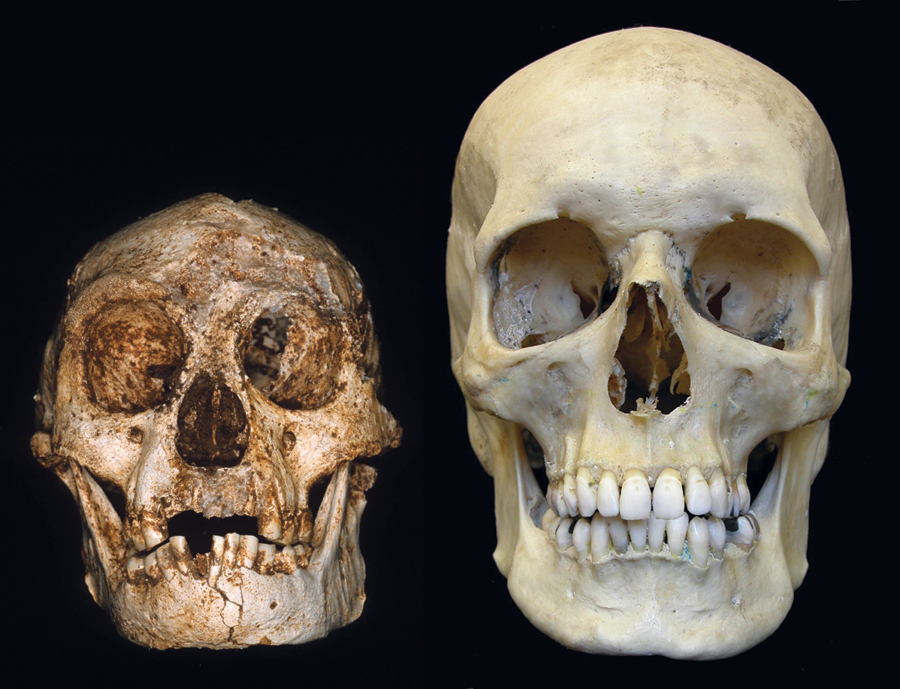Homo floresiensis << flaw REHS ee ehn sihs >> is a prehistoric humanlike creature that is strikingly small in stature. The species is known only from skeletal remains discovered on Flores Island in Indonesia. In 2003 and 2004, Australian and Indonesian researchers excavating in a cave called Liang Bua found bones representing at least 12 individuals. Additional fossil teeth and a partial jaw were excavated at the site in 2014. The remains of Homo floresiensis include the well-preserved partial skeleton of an adult, designated LB1. The bones show that adults in this population were little more than 3 feet (90 centimeters) tall. The remains also indicate a brain about one-third the size of the modern human brain. The species has been nicknamed “hobbits” after the short people in the fiction of the English author J. R. R. Tolkien.

The Flores fossils were found with stone tools. The bones of H. floresiensis date from about 100,000 to 60,000 years ago. Stone tools in the cave are from 190,000 to 50,000 years old. The cave also contained charcoal and burnt material. But these signs of fire date from about 40,000 years ago, when modern humans occupied the cave. Scientists have not found evidence that H. floresiensis used fire.
Many researchers suspect that H. floresiensis descended from a group of early human beings that dispersed from Africa. This group became isolated on the remote island long ago. The scientists believe the population gradually evolved (developed over time) a smaller body size. Prehistoric human species that lived at the same time as H. floresiensis include Homo heidelbergensis, which followed Homo erectus in many parts of the world. However, H. floresiensis resembles an earlier prehistoric human species called Homo habilis more closely than these later species. But H. habilis is known from fossils found only in Africa, and most scientists do not think they roamed beyond that continent.
The population of H. floresiensis may have died out soon after physically modern humans arrived on the island. But further study is needed to determine the relationship of this species to other human beings.
See also Prehistoric people (Migration from Africa).
